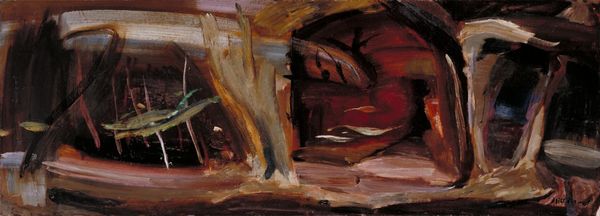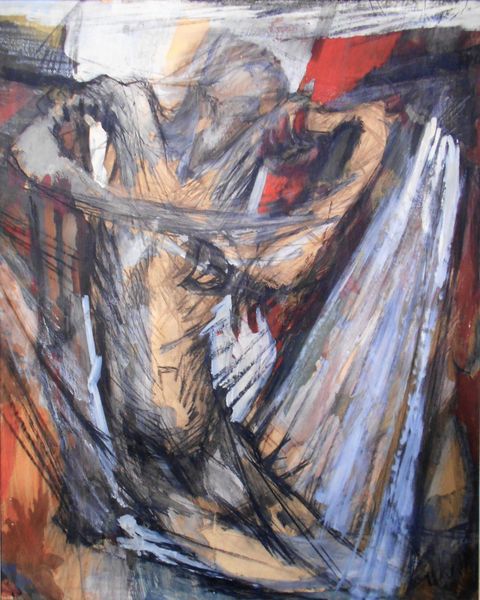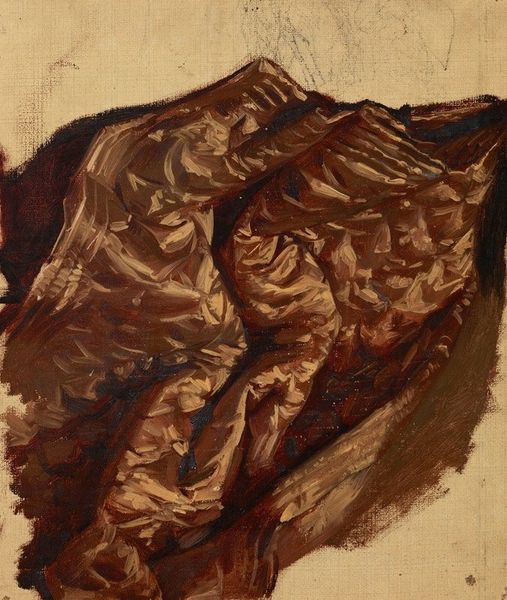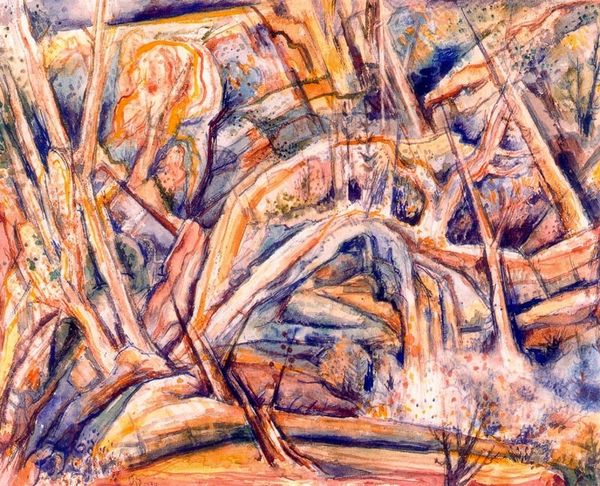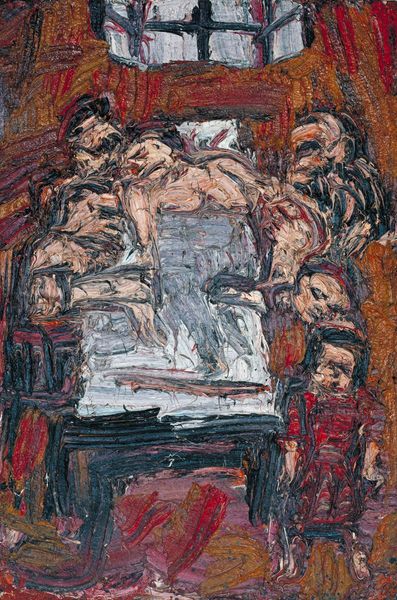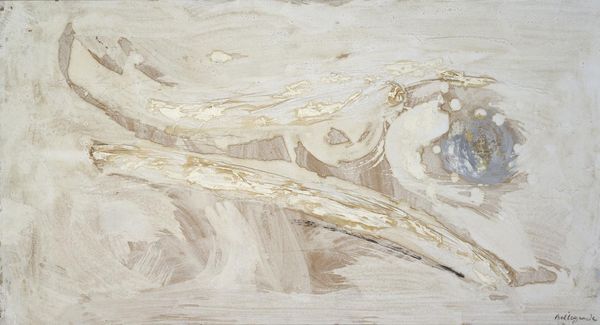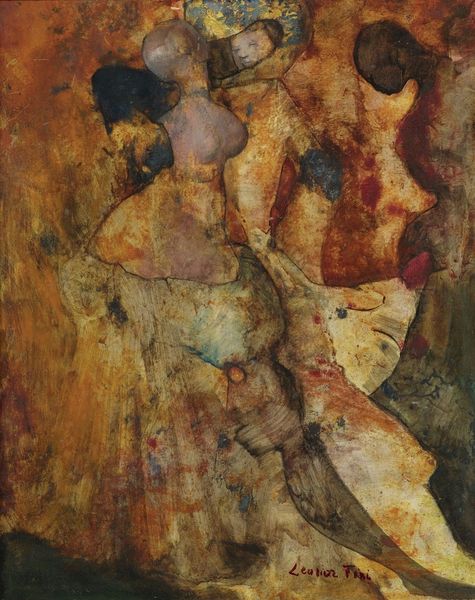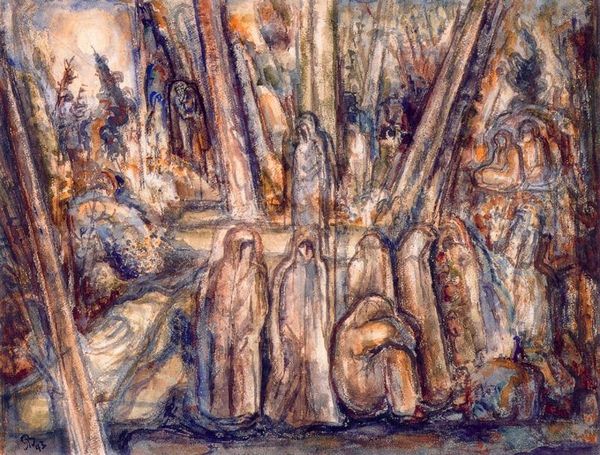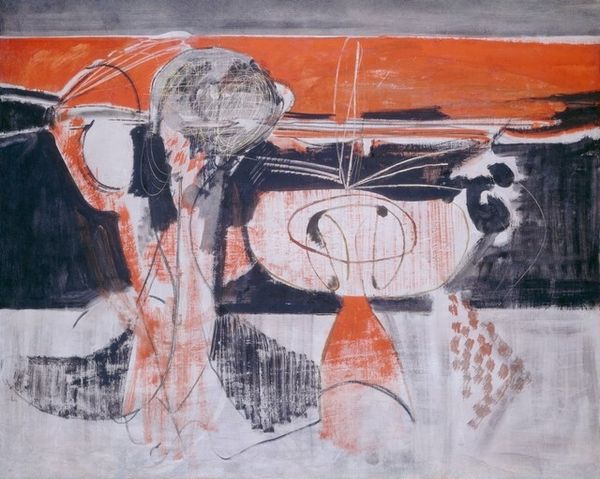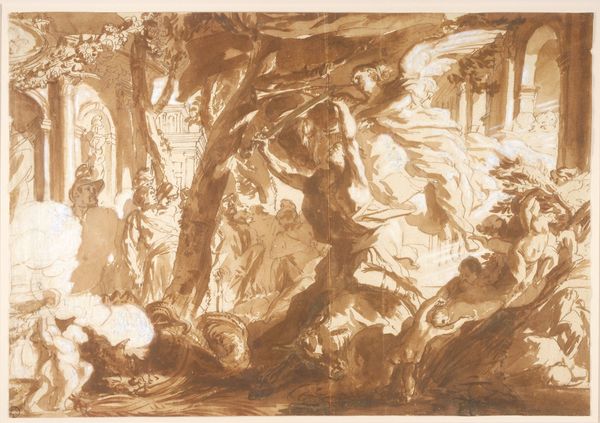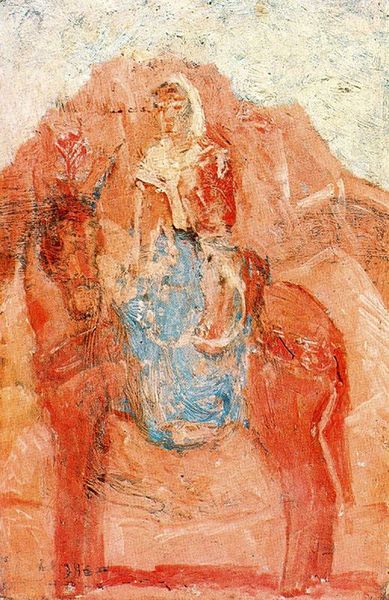
Copyright: Jacqueline Hick,Fair Use
Curator: Jacqueline Hick's "Dark Mourning," created in 1964 using oil paint, immediately strikes me with its intense atmosphere. The muted browns and reds create a heavy, somber mood. It’s a large group of figures gathered around a central shape covered by a sheet. What’s your first impression? Editor: Well, it certainly evokes a raw and uncomfortable feeling. It reminds me of depictions of death and grieving, perhaps a shroud covering a body? There’s a distinct lack of individual features. The collective experience seems emphasized over individual identities here. The composition and color palette contribute to that pervasive sense of anguish. Curator: Hick’s style has been linked to abstract expressionism, which makes sense with the distorted figures, ambiguous space, and emotionally charged brushwork we’re seeing here. Looking at Hick’s personal history, one finds that after working as an official war artist, themes of grief and the human figure became prominent within her artistic practice. Editor: Absolutely. The anonymity of these figures becomes crucial then. Instead of mourning an individual, they're emblems of a broader experience of loss, something particularly relevant considering it was painted less than 20 years after World War II. Hick’s artistic exploration touches upon collective trauma. We see echoes of the widespread suffering endured in the global conflicts and persistent sociopolitical strife during that time. Curator: It makes you consider the power of abstract forms and muted colors in conveying profound sadness and even collective pain, doesn't it? It’s a very heavy work in how it represents loss. The rawness feels particularly poignant because we are left unsure who these figures are or their individual circumstances. It really gives one pause about how images influence society, and how societal woes affect artistry. Editor: Yes, definitely. In its unsettling and evocative power, this piece confronts us with a mirror reflecting society's past—but it challenges viewers of future generations to consider humanity's propensity for both inflicting and enduring tragedy. Thanks for sharing your insight. Curator: And thank you for the fresh perspectives you've provided! It always interests me how artworks such as these evolve in relevance throughout the ages.
Comments
No comments
Be the first to comment and join the conversation on the ultimate creative platform.
